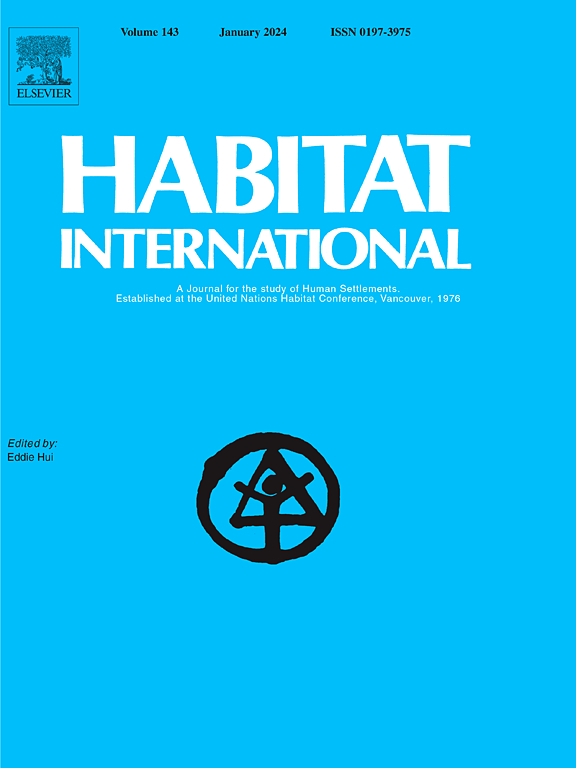Older adults’ decisions regarding mobility to age in place in medium- and high-rise multi-storey residential buildings in urban settings: A case study of South East Queensland, Australia
IF 6.5
1区 经济学
Q1 DEVELOPMENT STUDIES
引用次数: 0
Abstract
Population ageing and urbanisation requires a more thorough understanding and monitoring of older adult residential mobility trends. Many older adults move to urban areas and previous studies have been carried out on ageing in place in traditional low-rise residential buildings. However, there is little in the literature about the important push and pull factors influencing older adult moves to medium- and high-rise multi-storey residential buildings in urban areas as they age. This case study research considered the housing migration model of push and pull factors used in elderly residential mobility and investigated the older adults' decision-making regarding mobility to age in place in medium- and high-rise multi-storey residential buildings in South East Queensland, Australia. The study revealed how the older adults expressed a desire to age in place in multi-storey residential buildings in urban areas and identified it as an important element of quality of life. Many older adults chose to move house to high density urban areas from low density urban areas between the ages of 65 and 84. The ‘pull’ factor to significantly influence the decisions of movers was a low maintenance property and lifestyle change from a large suburban home whereas the ‘push’ factor was upkeep difficulties of the house related to old age. This study makes empirical contributions to knowledge in ageing residential mobility trends in urban areas and concludes by providing policy recommendations for developing more effective housing, public spaces, transportation, and community activities and services for older adults, including highlighting a number of recommendations for future research.
老年人在城市中高层多层住宅楼中就居家养老的流动性做出的决定:澳大利亚昆士兰州东南部案例研究
人口老龄化和城市化要求对老年人居住流动趋势有更透彻的了解和监测。许多老年人搬到了城市地区,以往的研究都是针对在传统低层住宅楼中的居家养老问题。然而,关于影响老年人随着年龄增长向城市地区中高层多层住宅楼迁移的重要推拉因素的文献却很少。本案例研究考虑了老年人居住迁移中使用的推拉因素的住房迁移模型,并调查了澳大利亚昆士兰东南部中高层多层住宅楼中老年人关于居家养老迁移的决策。研究揭示了老年人如何表达在城市地区的多层住宅楼中就地养老的愿望,并将其视为提高生活质量的一个重要因素。许多 65 至 84 岁的老年人选择从低密度城区搬到高密度城区。对搬迁者的决定产生重大影响的 "拉 "的因素是低维护房产和从郊区大房子中改变生活方式,而 "推 "的因素则是与老年有关的房屋维护困难。本研究为了解城市地区老龄化住宅流动趋势做出了实证性贡献,并在结论中提出了为老年人开发更有效的住房、公共空间、交通以及社区活动和服务的政策建议,包括强调了对未来研究的一些建议。
本文章由计算机程序翻译,如有差异,请以英文原文为准。
求助全文
约1分钟内获得全文
求助全文
来源期刊

Habitat International
Multiple-
CiteScore
10.50
自引率
10.30%
发文量
151
审稿时长
38 days
期刊介绍:
Habitat International is dedicated to the study of urban and rural human settlements: their planning, design, production and management. Its main focus is on urbanisation in its broadest sense in the developing world. However, increasingly the interrelationships and linkages between cities and towns in the developing and developed worlds are becoming apparent and solutions to the problems that result are urgently required. The economic, social, technological and political systems of the world are intertwined and changes in one region almost always affect other regions.
 求助内容:
求助内容: 应助结果提醒方式:
应助结果提醒方式:


